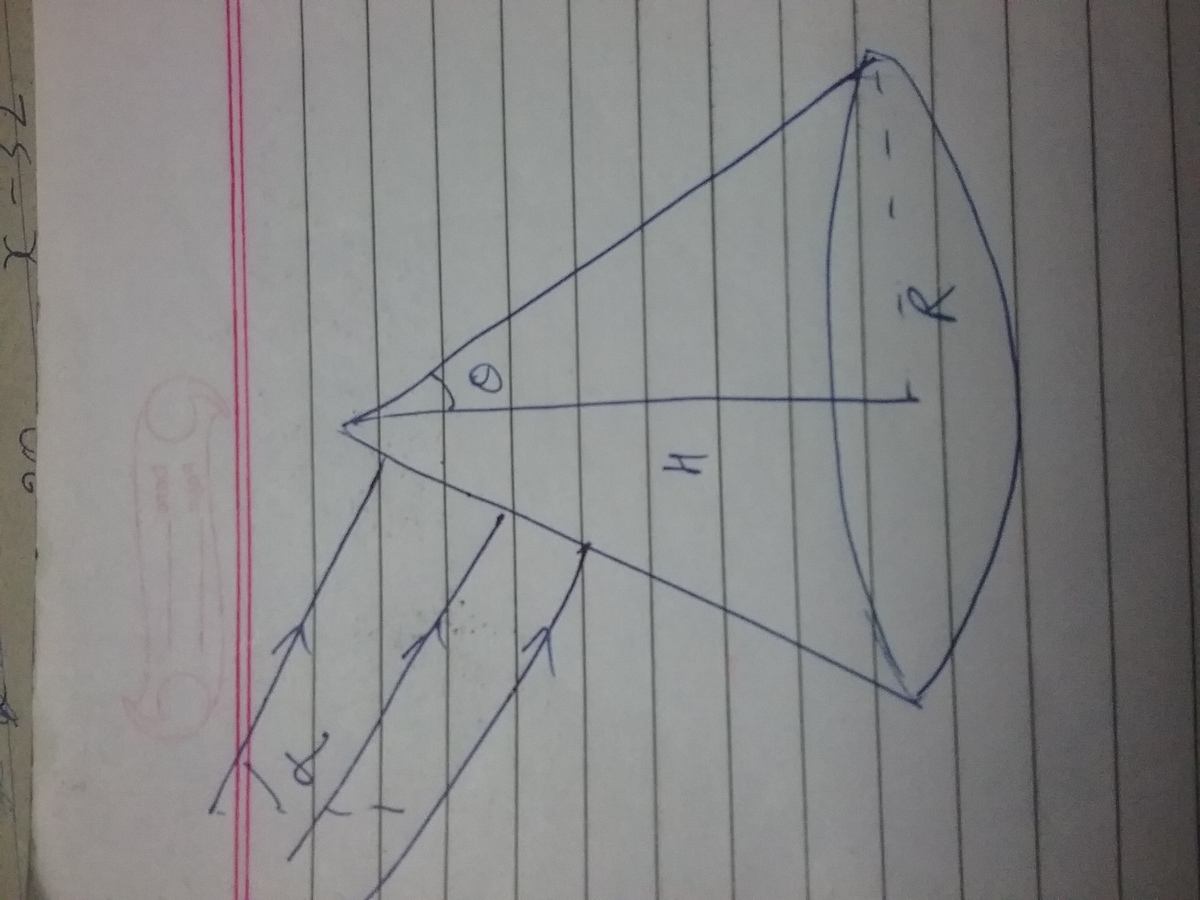Radiation on cone
 A light of intensity is incident at an angle with the vertical on a cone with semivertical angle , height and radius
A light of intensity is incident at an angle with the vertical on a cone with semivertical angle , height and radius
▪ Supposing that the cone is perflectly reflecting i.e. does not absorb or transmit
▪ Supposing that cone is perfectly absorbing i.e. does not reflect or transmit
Find the radiation force on cone in both cases.
No vote yet
1 vote
Easy Math Editor
This discussion board is a place to discuss our Daily Challenges and the math and science related to those challenges. Explanations are more than just a solution — they should explain the steps and thinking strategies that you used to obtain the solution. Comments should further the discussion of math and science.
When posting on Brilliant:
*italics*or_italics_**bold**or__bold__paragraph 1
paragraph 2
[example link](https://brilliant.org)> This is a quote# I indented these lines # 4 spaces, and now they show # up as a code block. print "hello world"\(...\)or\[...\]to ensure proper formatting.2 \times 32^{34}a_{i-1}\frac{2}{3}\sqrt{2}\sum_{i=1}^3\sin \theta\boxed{123}Comments
For the 2nd case, I have used projection area. It is semicircle and a semi ellipse,
So we can write area=2πR2+2πRH
And then use IA/c
Is this approach right?
And I have no idea for the first case
Log in to reply
for the first case the force will become twice of what u have found in the second case .change in momentum will be 2h/lambda .
And if it was a case where here was reflection and absorbtion .then u calculate the force in each case and multiply it with the coefficient of absorbption and reflection respectively (which would be specified in the question )(also to note that a+r=1 where a and r are the coefficients of absorbtion and reflection respectively )
Log in to reply
Exactly twice, are you sure? And I havent really found a proof for other half to be ellipse, can you find?
Log in to reply
ill try proving it .
Log in to reply
Thanks
how did u conclude that it would be an area of ellipse only in the first part ?
Log in to reply
I havent. For second I said its half ellipse half corcle, with no proof